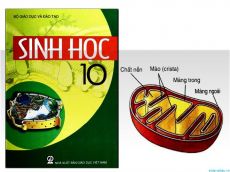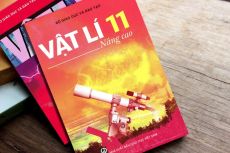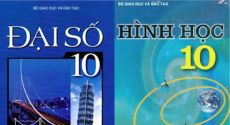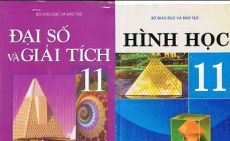Choose the letter A, B, C or D to complete the passage below
HÀ NỘI — The Government has approved the Ministry of Culture, Sports, and Tourism’s proposal to hold the 31st Southeast Asian Games (SEA Games 31) and the 11th ASEAN Para Games (Para Games 11) in Việt Nam in 2021.
At a meeting in the capital on Tuesday, the Cabinet assigned Hà Nội __________ (1) the host city, after successfully holding the SEA Games 22 in 2003, the Asian Indoor Games in 2009 and several other international sporting __________ (2). The ministry’s proposal was made after the SEA Games Federation (SEAGF) informed Việt Nam it would have the right to host the SEA Games 31. The federation said Cambodia, scheduled to host SEA Games 31, proposed __________ (3) hosting until the next Games in 2023 as it is not ready.
Concluding the meeting, Prime Minister Nguyễn Xuân Phúc lauded the determination of the culture, sports and tourism sector, as well as of Hà Nội and relevant ministries and agencies. Hosting the events is both the responsibility __________ (4) honour of Việt Nam as a constructive member of ASEAN, he said, adding it is also a chance to promote the Vietnamese land and people. The leader asked Hà Nội __________ (5) infrastructure, set forth a detailed plan on the organisation of the events and mobilise the participation of different economic sectors in these efforts. The sports sector should make preparations to reach the highest results at the tournament, he said.
(4)...................
Suy nghĩ và trả lời câu hỏi trước khi xem đáp án
Lời giải:
Báo saiGiải thích: cấu trúc both…and…: cả…và…
Dịch: Chủ trì sự kiện là cả trách nhiệm và vinh dự của Việt Nam như một thành viên kiến thiết của ASEAN, ông ấy nói, thêm vào đó là cơ hội xúc tiến đất nước và con người Việt Nam.
Câu hỏi liên quan
-
Read the following passage and mark the letter A, B, C, or D on your answer sheet to indicate the correct answer to each of the questions.
In developing countries, where three fourths of the world's population live, sixty percent of the people who can’t read and write are women. Being illiterate doesn’t mean they are not intelligent. It does mean it is difficult for them to change their lives. They produce more than half of the food. In Africa eighty percent of all agricultural work is done by women. There are many programs to help poor countries develop their agriculture. However, for years, these programs provided money and training for men.
In parts of Africa, this is a typical day for a village woman. At 4:45 a.m, she gets up, washes and eats. It takes her a half hour to walk to the fields, and she works there until 3:00 p.m. She collects firewood and gets home at 4:00. She spends the next hour and a half preparing food to cook. Then she collects water for another hour. From 6:30 to 8:30 she cooks. After dinner, she spends an hour washing the dishes and her children. She goes to bed at 9:30 p.m.
International organizations and programs run by developed nations are starting to help women, as well as men, improve their agricultural production. Governments have already passed some laws affecting women because of the UN Decade for Women. The UN report will affect the changes now happening in the family and society.
Which of these statements is NOT TRUE?
-
Read the passage and choose the best answers.
The 24th SEA Games was held from 6th to 15th December, 2007 in three provinces in Thailand, namely Nakhon Ratchsima, Bangkok, and Chon Buri. In fact, the 2007 SEA Games was to be hosted by Singapore, but Singapore gave up the chance, as its new national sports stadium is under construction and will not be completed in time for the next SEA Games. Thailand was then asked by The SEA Games Federation to host this regional sport event in place of Singapore.
The SEA Games takes place every two years, with 11 countries in Southeast Asia participating. Each member country, in alphabetical order, takes turn hosting this event. Let’s look at the number of sports and gold medals in The SEA Games in recent years. The 21st SEA Games, hosted by Malaysia in 2001, had 32 sports with 391 gold medals. There were 32 sports with 439 gold medals in The 22nd SEA Games, held in Vietnam in 2003. The 23rd SEA Games, in The Philippines in 2005, had 40 sports with 439 gold medals.
The 24th SEA Games in Thailand this year, featuring 43 sports and 485 gold medals, had the highest number of sports and gold medals in The Asian Games and The Olympic Games. So The SEA Games is regarded as the largest regional sporting event in the world in terms of number of sports and medalsWhere was The 21st SEA Games celebrated?
-
Read the passage carefully and choose the correct answer.
The 22nd SEA Games, hosted this year by Vietnam, has joined the international movement to rid sports of tobacco. For the first time, the regional sporting event will be tobacco-free under a landmark cooperative agreement signed in April 2003 between the World Health Organization (WHO), the 22nd SEA Games Organizing Committee and the Vietnamese Ministry of Health. Hanoi Health Department has organized a press seminar to celebrate and raise awareness about the tobacco-free SEA Games.
The 22nd SEA Games is the first games hosted by Vietnam and 10 countries from the Southeast Asian region with nearly 8,000 athletes and coaches will participate. It will be the first tobacco-free international sporting event in Vietnam, joining other international tobacco-free sporting events such as the FIFA World Cup 2002, and the Winter Olympic Games 2002.
The 22nd SEA Games will ban all sales, advertising and other promotion of tobacco products, and restricts smoking in all Games venues. The aim is to protect spectators, athletes, event staff, media and other visitors from the serious health hazards of second-hand tobacco smoke, as well as to change public attitudes about the social acceptability of smoking. Madame Pascale Brudon, WHO Representative in Vietnam, stated, "Vietnam has established 3 years ago a comprehensive, ambitious national tobacco control policy and a national tobacco control program. The tobacco-free 22nd SEA Games will be yet another area where Vietnam is leading the way for other countries in the region and the world in protecting its citizens from the debilitating and disastrous consequences of tobacco use."
WHO has provided funding and technical assistance to the SEA Games Organizing Committee and Vietnamese Ministry of Health to train of over 4,000 SEA Games organizers and volunteers on the implementation of the tobacco-free policy. An international team of trainers from the Ministry of Health, International Organization for Good Temper (lOGT), WHO and International Development Enterprises (IDE) began a series of national training workshops for volunteers in April, 2003. The tobacco-free SEA Games are an inspiration and a model for other sport events, big and small, not only in Vietnam but also in the Southeast Asian and Western Pacific Region.
According to the text, The tobacco _______
-
Read the following passage and mark the letter A, B, C, or D on your answer sheet to indicate the correct answer to each of the questions.
A rather surprising geographical feature of Antarctica is that a huge freshwater lake, one of the world’s largest and deepest, lies hidden there under four kilometers of ice. Now known as Lake Vostok, this huge body of water is located under the ice block that comprises Antarctica. The lake is able to exist in its unfrozen state beneath this block of ice because its waters are warmed by geothermal heat from the earth’s core. The thick glacier above Lake Vostok actually insulates it from the frigid temperatures on the surface.
The lake was first discovered in the 1970s while a research team was conducting an aerial survey of the area. Radio waves from the survey equipment penetrated the ice and revealed a body of water of indeterminate size. It was not until much more recently that data collected by satellite made scientists aware of the tremendous size of the lake; the satellite-borne radar detected an extremely flat region where the ice remains level because it is floating on the water of the lake.
The discovery of such a huge freshwater lake trapped under Antarctica is of interest to the scientific community because of the potential that the lake contains ancient microbes that have survived for thousands of years, unaffected by factors such as nuclear fallout and elevated ultraviolet light that have affected organisms in more exposed areas. The downside of the discovery, however, lies in the difficulty of conducting research on the lake in such a harsh climate and in the problems associated with obtaining uncontaminated samples from the lake without actually exposing the lake to contamination. Scientists are looking for possible ways to accomplish this.
The purpose of the passage is to ________.
-
Today we take electricity for granted and perhaps we do not realize just how useful this discovery has been. Steam was the first invention that replaced wind power. It was used to drive engines and was passed through pipes and radiators to warm rooms. Petrol mixed with air was the next invention that provided power. Exploded in a cylinder, it drove a motor engine, Beyond these simple and direct uses, those forms have not much adaptability.
On the other hand, we make use of electricity in thousands of ways. From the powerful voltages that drive our electric trains to the tiny current needed to work a simple calculator, and from the huge electric magnet in steel works that can lift 10 tons to the tiny electric magnet in a doorbell, all are powered by electricity. An electric current can be made with equal ease to heat a huge mass of molten metal in a furnace, or to boil a jug for a cup of coffee. Other than atomic energy, which has not as yet been harnessed to the full, electricity is the greatest power in the world. It is flexible, and so adaptable for any task for which it is wanted. It travels so easily and with incredible speed along wires or conductors that it can be supplied instantly over vast distances.
To generate electricity, huge turbines or generators must be turned. In Australia they use coal or water to drive this machinery. When dams are built, falling water is used to drive the turbines without polluting the atmosphere with smoke from coal. Atomic power is used in several countries but there is always the fear of an accident. A tragedy once occurred at Chernobyl, in Ukraine, at an atomic power plant used to make electricity. The reactor leaked, which caused many deaths through radiation.
Now scientists are examining new ways of creating electricity without harmful effects to the environment. They may harness the tides as they flow in and out of bays. Most importantly, they hope to trap sunlight more efficiently. We do use solar heaters for swimming pools but as yet improvement in the capacity of the solar cells to create more current is necessary. When this happens, electric cars will be viable and the world will rid itself of the toxic gases given off by trucks and cars that burn fossil fuels.What do we call machines that make electricity?
-
Read the passage Carefully, then choose the correct answer.
The Southeast Asian Games owes its origins to the Southeast Asian Peninsular Games or SEAP Games. On May 22, 1958, delegates from the countries in Southeast Asian peninsula attending the 3rd Asian Game's in Tokyo, Japan had a meeting and agreed to establish a sport organization. The SEAP Games was conceptualized by Laung Sukhumnaipradit, then Vice-President of the Thailand Olympic Committee. The proposed rationale was that a regional sports event will help promote cooperation, understanding and relations among countries in the Southeast Asian region.
Thailand, Myanmar, Malaysia, Laos, Vietnam and Cambodia (with Singapore Included thereafter) were the founding members. These countries agreed to hold the Games biennially. The SEAP Games Federation Committee was formed.
The first SEAP Games were held in Bangkok from 12-17 December , 1959 comprising more than 527 athletes and officials from Thailand, Myanmar, Malaysia, Singapore, South Vietnam and Laos participating in 12 sports.
At the 8th SEAP Games in 1975, the SEAP Federation considered the inclusion of Indonesia and the Philippines. The two countries were formally admitted In 1977, the same year when SEAP Federation changed their name to Southeast Asian Games Federation (SEAGF), and the games were known as the Southeast Asian Games. Brunei was admitted at the 10th SEA Game in Jakarta, Indonesia, and East Timor at the 22nd SEA Games in Hanoi, Vietnam.
The 2007 Southeast Asian Games were held in the Thailand, which started from 6 December and ended on 15 December 2007, hosting the biennial event for the sixth time and it was also the most protested SEAG ever. The next host for the SEA Games is Laos. It is Laos' first time at the host for the biannual games.The SEAP Games _________
-
Read the passage below and choose one correct answer for each question.
The primary attraction of snorkeling is the opportunity to observe underwater life in a natural setting, such as coral reefs, fish, starfish, and mollusks. Other organisms that can be seen while snorkeling include various forms of seaweed, jellyfish, shrimp and sea turtles. Snorkeling requires no special training, only the ability to swim and to breathe through the snorkel. However, it is considered advisable that one get some instruction from a tour guide, dive shop, or equipment rental shop, any of which often can be found around popular snorkeling locations. Instruction generally covers equipment usage, basic safety, what to look for, and what to look out for, including how not to damage fragile organisms such as coral. As with scuba diving, it is always recommended that one, should not snorkel alone, but rather with a friend, a guide, or a tour group
Swim fins used in snorkeling are usually longer than those used in diving. Snorkel is a tube about thirty centimeters (twelve inches) long, usually J-shaped, fitted with a mouthpiece, and constructed of rubber or plastic. It is used for breathing air from above the water surface when the mouth and nose are submerged, either when snorkeling or during a surface swim before or after scuba diving. The snorkel usually has a piece of rubber that attaches the snorkel to the outside of the strap of the diving mask, as sticking the snorkel in between the strap and the mask could cause the mask to leak, or risk losing the snorkel should the diver choose to switch to scuba.
Typically, the diving mask also serves to prevent breathing through the nose, so that one is forced to breathe through the snorkel. This also provides some negative pressure which helps keep the .mask sealed against the face, though attempting to breathe out through the nose can break this seal and fog the mask.
Snorkeling ________.
-
Read the following passage and mark the letter A, B, C, or D on your answer sheet to indicate the correct word or phrase that best fits each of the numbered blanks.
An A level is an Advanced level GCE qualification. This exam is (1) ____ taken after two years of A level study, following the O level/IGCSE exams. Students can take any number of A level exams; in the UK, most college students take three or four A level exams for their final two years of study. The (2) ____ of A levels to be taken will often depend on the qualifications that the university chosen requires. A level results can open doors to undergraduate studies at some of the best higher educational institutions in the world, and to a wide range of professional and vocational courses (3) _______ can help build skills for an exciting and rewarding career. In many countries round the world, some schools follow the GCE syllabus to prepare their pupils for taking A level exams. Students at these schools should enquire at their school about how they can register and sit (4) ____ the exams. Students who do not attend a school that follows the GCE syllabus can still take A level exams and can register as a private individual with the British Council.
In order to register for an A level exam one will need to complete an entry form which will become available at the British Council offices. Forms usually become (5) ____ for January examinations in early August of the preceding year. For May/June examinations, they are available in early December of the preceding year.The (2) ____ of A levels to be taken will often depend on the qualifications that the university chosen requires
-
Read the following passage and mark the letter A, B, C, or D on your answer sheet to indicate the correct answer to each of the questions.
Mandatory volunteering made many members of Maryland's high school class of 97 grumble with indignation. They didn't like a new requirement that made them take part in the school's community service program. Future seniors, however, probably won't be as resistant now that the program has broken in. Some, like John Maloney, already have completed their required hours of approved community service. The Bowie High School sophomore earned his hours in eighth grade by volunteering two nights a week at the Larkin-Chase Nursing and Restorative Center in Bowie.He played shuffle board, cards, and other games with the senior citizens. He also helped plan parties for them and visited their rooms to keep them company.
John, fifteen, is not finished volunteering. Once a week he videotapes animals at the Prince George's County animal shelter in Forestville. His footage is shown on the Bowie public access television channel in hopes of finding homes for the animals. "Volunteering is better than just sitting around," says John, "and I like animals; I don't want to see them put to sleep." He's not the only volunteer in his family. His sister, Melissa, an eighth grader, has completed her hours also volunteering at Larkin-Chase.
"It is a good idea to have kids go out into the community, but it's frustrating to have to write essays about the works," she said. It makes you feel like you're doing it for the requirement and not for yourself." The high school's service learning office, run by Beth Ansley, provides information on organizations seeking volunteers so that students will have an easier time fulfilling their hours.
"It's ridiculous that people are opposing the requirements," said Amy Rouse, who this summer has worked at the Ronald McDonald House and has helped to rebuild a church in Clinton.
"So many people won't do the service unless it's mandatory," Rouse said, "but once they start doing it, they'll really like it and hopefully it will become a part of their lives - like it has become a part of mine."
The word "it" in paragraph 7 refers to ______.
-
Read the following passage and mark the letter A, B, C, or D on your answer sheet to indicate the correct answer to each of the questions.
New research shows that long-term changes in diseases in ocean species coincides with decades of widespread environmental change. The paper, "Increases and decreases in marine disease reports in an era of global change," was published Oct. 9 in Proceedings of the Royal Society B.
Understanding oceanic trends is important for evaluating today's threats to marine systems, and disease is an important sentinel of change, according to senior author Drew Harvell, professor of marine biology at Cornell University. "Disease increases and decreases can both be bad news," said lead author Allison Tracy, who studied with Harvell. "The long-term changes in disease that we see here may result from anthropogenic pressure on plants and animals in the ocean." The researchers examined marine infectious disease reports from 1970 to 2013, which transcend short-term fluctuations and regional variation. They examined records of corals, urchins, mammals, decapods, fish, mollusks, sharks, rays, seagrass and turtles.
For corals and urchins, reports of infectious disease increased over the 44-year period. In the Caribbean, increasing coral disease reports correlated with warming events. It is widely known that coral bleaching increases with warming, but Harvell said they have established a long-term connection between warming and coral disease. "We've finally linked a coral killer like infectious disease to repeated warming bouts over four decades of change," she said. "Our study shows that infectious disease reports are associated with warm temperature anomalies in corals on a multi-decadal scale." These results improve understanding of how changing environments alter species interactions, and they provide a solid baseline for health of marine life in the period studied.The word “coincides” in paragraph 1 is closest in meaning to ______.
-
American music, in most of its various forms, can be traced back to the music of the earliest African- Americans. Even though these Americans came here under the worst of circumstances, they still brought with them traditions, and developed new traditions of their own, that have grown into what is recognized around the world today as American music.
Musicians, like other artists, are usually quick to give credit where credit is due. Just as a writer quotes his sources, a musician credits those musicians who inspired him. In the case of the early African-Americans, that is not always easy. Many of the slaves who brought musical traditions from Africa will never be known by name. No one wrote their history. Many of the slaves who sang work songs in the fields will never be known by name. No one wrote their history either.
However, there is a lot that we do know.
The first well-recognized form of African-American music was spirituals. Spirituals are religious songs. They are songs that tell a story or express emotions. Spirituals have a strong rhythm. They are often sung by a group, sometimes with a leader who sings a line or two alone and a chorus that sings the refrain. Spirituals originated in the Southern United States. Spirituals sung by slaves often expressed the hope for freedom that was so important in their lives. Well know spirituals include "Go Down Moses," "Deep River," and "Swing Low SweetChariot." After slavery ended, spirituals began to spread to other parts of the United States. Harry Thacker Burleigh was one of the first singers to perform spirituals on stage in a concert. Marian Anderson, well known for her classical singing, helped spirituals to gain a wider audience too. Spirituals influenced the development of another well-known form of American music - the blues. The blues were a more individual style of music than spirituals. Blues were often sung solo, and sometimes they were accompanied by guitar music. As the name suggests, the blues were often about sadness and facing troubles. However, the blues could also be funny, positive, and even defiant. One blues singer, loved for her strong, beautiful voice, was Bessie Smith. Another early blues musician was W. C. Handy. Handy was not only a musician, he also wrote music, promoted concerts, and published bluessongs.
During the time that the blues were spreading across the country, another style of music was also quickly gaining in popularity. Ragtime was energetic music with a complicated, syncopated beat. Often played on the piano, ragtime was the latest and most sophisticated in American popular music. The best-known ragtime musician was probably Scott Joplin, who wrote many hit ragtime pieces for the piano including "Maple Leaf Rag."
Eventually, elements from all of these forms of music and more came back together. In their own kind of melting pot, African rhythms, slave work songs, spirituals, blues, ragtime, and other influences recombined to form the beginnings of that truly American art form - jazz. In the late 1800’s jazz was just beginning, but not long after the turn of the century, it would be the most popular American music. It would go on from there to worldwide popularity. Jazz would branch out into many forms, and it would influence future styles of Americanmusic.
Many musicians today credit earlier musicians such as Scott Joplin or Bessie Smith with inspiring their music. It’s a shame that they can’t also name the earliest African-Americans who really began the traditions that led to the American music of today.
According to the passage, who introduced the early form of American music?
-
Choose the letter A, B, C or D to answer these following questions
Games and sports are an important and essential part of a person's life. Along with the study, games, and sports are also important. Hence, most schools conducts various games competitions and sports. Along with the mental development of every person, physical development is also which needs to be taken into consideration. Sports is an important part of a student’s life as well. So, what is the importance of sports and games?
Sports gives us a good exercise which makes us physically strong and increases our stamina and strength. Regular sports activities make us active and lead to good health. Playing Games makes us aware of our environment i.e. Makes us mentally awake and increases our concentration power. Various Games needs good strategies for better performance and teamwork, so it increases our thinking ability and teaches us the power of teamwork and to find a way out of difficult situations. Games and sports also need a lot of energy. It makes us energetic. Games and Sports needs a lot of cooperation between the players. Hence it increases cooperation with each other.
And at last, all of the games have their own rules and regulations which if not followed, leads to negative points. Hence, we can say that it teaches us the importance of following rules in life.
Should games rules and regulations be followed?
-
Read the following passage and mark the letter A, B, C, or D on your answer sheet to indicate the correct answer to each of the questions.
Coral reefs are some of the most diverse ecosystems in the world, housing tens of thousands of marine species. With their hardened surfaces, corals are sometimes mistaken as being rocks. And, because they are attached, “taking root” to the seafloor, they are often mistaken for plants. However, unlike rocks, corals are alive. And unlike plants, corals do not make their own food. Corals are in fact animals. Appearing as solitary forms in the fossil record more than 400 million years ago, corals are extremely ancient animals that evolved into modern reef-building forms over the last 25 million years.
Coral reefs are the largest structures on earth of biological origin. Coral reefs are unique and complex systems. Rivaling old growth forests in longevity of their ecological communities, well-developed reefs reflect thousands of years of history.
Corals are ancient animals related to jellyfish and anemones. The branch or mound that we often call “a coral” is actually made up of thousands of tiny animals called polyps. A coral polyp is an invertebrate that can be no bigger than a pinhead to up to 30 centimeters (1 foot) in diameter. The polyps extend their tentacles at night to sting and ingest tiny organisms called plankton and other small creatures. Each polyp has a saclike body and a mouth that is encircled by stinging tentacles. The polyp uses calcium carbonate (limestone) from seawater to build a hard, cup-shaped skeleton. This skeleton protects the soft, delicate body of the polyp.
Reefs only occur in shallow areas that are reachable by sunlight because of the relationship between coral and algae. Various types of microscopic algae, known as Symbiodinium, live inside of the coral, providing them with food and helping them to grow faster.
There are over 2,500 kinds (species) of corals. About 1,000 are the hard corals that build coral reefs. Other corals are soft corals. Soft corals have skeletons that are flexible and can bend with the water. The three main types of coral reefs are fringing reefs, barrier reefs, and coral atolls. The most common type of reef is the fringing reef. This type of reef grows seaward directly from the shore. They form borders along the shoreline and surrounding islands. When a fringing reef continues to grow upward from a volcanic island that has sunk entirely below sea level, an atoll is formed. Atolls are usually circular or oval in shape, with an open lagoon in the center. Any reef that is called a barrier reef gets its name because its presence protects the shallow waters along the shore from the open sea. That protection promotes the survival of many types of sea plant and animal life.What does the word “they” in the last paragraph refer to?
-
Choose the word or phrase among A, B, C or D that best fits the blank space in the following passage:
"The 22nd Southeast Asian Games (22nd SEA Games) successfully closed in Ha Noi. Prominent among 40,000 spectators at the closing (1)…. at My Dinh National Stadium were Party Secretary General Nong Duc Manh, Vice President Truong My Hoa and leaders of the Asian Sport Federation.
A spectacular art (2)…… programme with the participation of 300 musicians and 500 artists was (3)……. to welcome the success of the Games. Singaporean swimmer Yeojoscelin who won six gold medals and Vietnamese marksman Nguyên Manh Tuong who owned five gold medals during the Games were awarded the most (4)…… athlete title.
Nguyen Danh Thai, Minister-Chairman of the State Committee for Physical Training and Sports, President of the 22nd SEA Games Council and Head of the 22nd SEA Games Organising Committee, (5)……. that the Games have successfully concluded after boisterous competition days. All activities took place(6)…… scheduled in an (7)….. of solidarity and friendship among Southeast Asian people.
With the Vietnamese Government and people's efforts and international support, the 22nd SEA Games have become a festival that impressed people (8)…. the spirit of “solidarity. cooperation for peace and development”.
The 22nd SEA Games are not only a song of honesty and nobility in competition and organising competition but (9)….. a sign of a bright future for the development of regional sports. After Vietnamese singer My Linh and a Philippine singer sang the song “For the World of Tomorrow”, Minister Nguven Danh Thai and Chairman of the Ha Noi People's Committee Hoang Van Nghiên handed over the SEA Games Flag to the Chairman of the Olympic Committee and the Head of the Philippine sport team, (10)…… the host country of the 23rd SEA Games - the Philippines 2005."3. programme with the participation of 300 musicians and 500 artists was (3)……. to welcome the success of the Games.
-
Read the following passage and mark the letter A, B, C, or D on your answer sheet to indicate the correct answer to each of the questions.
A rather surprising geographical feature of Antarctica is that a huge freshwater lake, one of the world’s largest and deepest, lies hidden there under four kilometers of ice. Now known as Lake Vostok, this huge body of water is located under the ice block that comprises Antarctica. The lake is able to exist in its unfrozen state beneath this block of ice because its waters are warmed by geothermal heat from the earth’s core. The thick glacier above Lake Vostok actually insulates it from the frigid temperatures on the surface.
The lake was first discovered in the 1970s while a research team was conducting an aerial survey of the area. Radio waves from the survey equipment penetrated the ice and revealed a body of water of indeterminate size. It was not until much more recently that data collected by satellite made scientists aware of the tremendous size of the lake; the satellite-borne radar detected an extremely flat region where the ice remains level because it is floating on the water of the lake.
The discovery of such a huge freshwater lake trapped under Antarctica is of interest to the scientific community because of the potential that the lake contains ancient microbes that have survived for thousands of years, unaffected by factors such as nuclear fallout and elevated ultraviolet light that have affected organisms in more exposed areas. The downside of the discovery, however, lies in the difficulty of conducting research on the lake in such a harsh climate and in the problems associated with obtaining uncontaminated samples from the lake without actually exposing the lake to contamination. Scientists are looking for possible ways to accomplish this.
The word “hidden” in paragraph 1 is closest in meaning to ______.
-
American music, in most of its various forms, can be traced back to the music of the earliest African- Americans. Even though these Americans came here under the worst of circumstances, they still brought with them traditions, and developed new traditions of their own, that have grown into what is recognized around the world today as American music.
Musicians, like other artists, are usually quick to give credit where credit is due. Just as a writer quotes his sources, a musician credits those musicians who inspired him. In the case of the early African-Americans, that is not always easy. Many of the slaves who brought musical traditions from Africa will never be known by name. No one wrote their history. Many of the slaves who sang work songs in the fields will never be known by name. No one wrote their history either.
However, there is a lot that we do know.
The first well-recognized form of African-American music was spirituals. Spirituals are religious songs. They are songs that tell a story or express emotions. Spirituals have a strong rhythm. They are often sung by a group, sometimes with a leader who sings a line or two alone and a chorus that sings the refrain. Spirituals originated in the Southern United States. Spirituals sung by slaves often expressed the hope for freedom that was so important in their lives. Well know spirituals include "Go Down Moses," "Deep River," and "Swing Low SweetChariot." After slavery ended, spirituals began to spread to other parts of the United States. Harry Thacker Burleigh was one of the first singers to perform spirituals on stage in a concert. Marian Anderson, well known for her classical singing, helped spirituals to gain a wider audience too. Spirituals influenced the development of another well-known form of American music - the blues. The blues were a more individual style of music than spirituals. Blues were often sung solo, and sometimes they were accompanied by guitar music. As the name suggests, the blues were often about sadness and facing troubles. However, the blues could also be funny, positive, and even defiant. One blues singer, loved for her strong, beautiful voice, was Bessie Smith. Another early blues musician was W. C. Handy. Handy was not only a musician, he also wrote music, promoted concerts, and published bluessongs.
During the time that the blues were spreading across the country, another style of music was also quickly gaining in popularity. Ragtime was energetic music with a complicated, syncopated beat. Often played on the piano, ragtime was the latest and most sophisticated in American popular music. The best-known ragtime musician was probably Scott Joplin, who wrote many hit ragtime pieces for the piano including "Maple Leaf Rag."
Eventually, elements from all of these forms of music and more came back together. In their own kind of melting pot, African rhythms, slave work songs, spirituals, blues, ragtime, and other influences recombined to form the beginnings of that truly American art form - jazz. In the late 1800’s jazz was just beginning, but not long after the turn of the century, it would be the most popular American music. It would go on from there to worldwide popularity. Jazz would branch out into many forms, and it would influence future styles of Americanmusic.
Many musicians today credit earlier musicians such as Scott Joplin or Bessie Smith with inspiring their music. It’s a shame that they can’t also name the earliest African-Americans who really began the traditions that led to the American music of today.
What is the closest meaning to the word “chorus” used in the passage?
-
The Japan of the mid-nineteenth century was a shadow of the modern economic juggernaut that is now one of the world's leading traders. For hundreds of years, Japan had been secluded from the outside world by the strict policies of the rulers of Japan, the Tokugawa shoguns. With the exception of one Dutch ship per year at the port of the Nagasaki, the Japanese refused to deal with foreign ships or nations. Sailors shipwrecked on the Japanese islands were treated harshly and often imprisoned. Passing vessels were refused food, water, and other provisions. With a goal to right these wrongs and to open Japan to trade, in 1853, the United States sent its most capable man, Admiral Matthew Perry, and four warships to open Japan to the rest of the world. The consequences of those actions are still being felt today.
In the seventeenth century, the Japanese had opened their doors briefly to the Dutch and allowed a trading station and Christian enclave in Nagasaki. Guns were imported as part of this trade, and they were one of the reasons for a great upheaval that engulfed Japan for many decades, as a civil war raged between powerful shoguns, or warlords. Finally, Tokugawa emerged as the victor and claimed the lordship of Japan. During these upheavals, the emperor and his family had stood by wielding no power and existed merely as a figurehead. Soon after the civil war, the abandoned the use of guns and the art of the gun making. When Admiral Perry and his fleet arrived in 1853, they were defenseless against his awesome firepower.
Perry had three main purposes when he arrived in Japan: open the country to American trade, get an agreement to use Japan as a coaling and provisioning station for American vessels, and provide guarantees that Japan would aid shipwrecked American sailors. He wished to deal only with the highest officials and rebuffed Japanese attempts to foster lower-level emissaries on him. He sailed away to examine further the coast of Taiwan as a possible coaling station but returned to Japan the following spring in March 1854. This time, under threat of naval bombardment, the Japanese relented and finally signed the Treaty of Kanagawa on March 31, 1854. In addition to the three main items, the Japanese agreed to allow an American consulate to be established. At first, only Nagasaki was open to American trade, but the treaty stipulated that, after five years, other ports would be opened.
The consequences of these events were far reaching for Japan and the world. Within a few years, foreign currency began to flow to Japan, which upset its economy and caused rising inflation. This was a precursor to the fall of the Tokugawa shoguns and the return of the emperor as the leader of Japanese affairs in 1868. The Emperor Meiji then set a clear path for his nation, not wanting Japan to be under the heel of the foreigners who now clamored at the heel of the foreigners of his land. Meiji sent sailors to England to learn how to build ships and fight a modern naval war, invited German army officers to train his soldiers, and made deals with many companies to modernize Japan's industry, transportation, and communications. In fact, the efforts were so successful that, by the 1980s, the world began to view Japan as one of the great powers, more so after it defeated both China and Russia on land and at sea in two local wars. The Russian defeat was even more astonishing since the Europeans were unused to losing to those they considered their inferiors.
Japan's rapid industrialized and militarization had dreadful consequences for Asia, as Meiji's grandson Hirohito led the nation down the path to world war, which ultimately saw the destruction of much of Japan. The shock of this defeat still echoes through Japanese history, as does the arriv -
An idea came to me, and I turned off the lights in the studio. In the dark ness, I put the cello's spike into a loose spot on the carpet, tightened the bow and drew it across the open strings. I took off my shirt and tried it again; it was the first time in my life I'd felt the instrument against my bare chest. I could fell the vibration of the strings travel through the body of the instrument to my own body. I'd never thought about that; music scholars always talk about the resonating properties of various instruments, but surely the performer's own body must have some effect on the sound. As I dug into the notes I imagined that my own chest and lung were extensions of the sound box; I seemed to be able to alter the sound by the way I sat, and by varying the muscular tension in my upper body.
After improvising for a while, I started playing the D minor Bach suite, still in the darkness. Strangely freed of the task of finding the right phrasing, the right intonation, the right bowing, I heard the music through my skin. For the first time I didn't think about how it would sound to anyone else, and slowly, joyfully, gratefully, I started to hear again. The note sang out, first like a trickle, then like a fountain of cool water bubbling up from a hole in the middle of the desert. After an hour or so I looked up, and in the darkness saw the outline of the cat sitting on the floor in front of me, cleaning her paws and purring loudly. I had an audience again, humble as it was.
So that's what I do now with the cello. At least once a day I find time to tune it, close my eyes, and listen. It’s probably not going to lead to the kind of come back I'd fantasized about for so long – years of playing badly have left scars on my technique, and, practically speaking, classical musicians returning from obscurity are almost impossible to promote – but might eventually try giving a recital if I feel up to it. Or better yet, I may pay for Dr. Polk if our date at the concert goes well. Occasionally I fell a stab of longing, and I wish I could give just one more concert on the great stage before my lights blink off, but that longing passes more quickly now. I take solace on the fact that, unlike the way I felt before, I can enjoy playing for myself now. I fell relaxed and expansive when I play, as if I could stretch out my arms and reach from one end of the apartment to the other. A feeling of the completeness and dignity surrounds me and lifts me up.All of following are mentioned in paragraph 2 as part of the cellist's new way of playing EXCEPT ...................
-
Read the following passage and mark the letter A, B, C, or D on your answer sheet to indicate the correct answer to each of the questions.
To quote CREST founder Dr. Martha Honey, we earnestly believe that ecotourism is “simply a better way to travel.” Here’s a look at how this transformational approach to travel benefits conservation, increases cross-cultural understanding, and ultimately turns travelers into environmental advocates:
To see how ecotourism benefits nature and wildlife, let’s look at endangered species such as African Elephants. Ivory from Elephant tusks is worth $1500 a pound on the black market, which has led to a dramatic increase in poaching. But Elephants are worth 76 times more alive than dead. When you consider the revenue from wildlife photography tours, luxury safari camps, and other ecotourism offerings, a single Elephant is worth $1.3 million over the course of its lifetime! Ecotourism offers a long-term alternative to exploitation, generating sustainable revenue and ensuring better overall health of the ecosystem.
Nature reserves and national parks help prevent deforestation and pollution, while also protecting the habitat of endemic species. The revenue that ecotourism provides can help replace profits from exploitative practices such as mining or slash ‘n’ burn agriculture. It can also help ensure the long-term financial viability of the area. Naturalist guides also help travelers understand the value of a pristine ecosystem, and teach them about the importance of conservation. This ultimately help to create a more mindful and conscious legion of travelers.
When managed properly, ecotourism can offer locals alternative revenue streams. In wildlife-rich countries such as Rwanda, former poachers are often employed as guides or trackers, capitalizing on their knowledge of the animals and their habitat. In Costa Rica, unemployment has fallen to less than 10% since the country started building its ecotourism infrastructure in the 1970s. Involving local communities in tourism management empowers them by ensuring that more revenue is reinvested locally. Ecotourism also offers indigenous peoples an opportunity to remain on ancestral land, conserve it, and preserve traditional culture.
Sure, being a responsible traveler takes a greater level of commitment to being conscious and mindful of the impact we have on the destinations we visit. But ecotourism also offers us incredible, transformative experiences, allowing us to develop closer personal relationships to the nature, wildlife, and local people we encounter during our adventures. Learning about ecotourism can permanently change your understanding of mankind’s role in our planetary ecosystem. And once you’ve had that sort of travel experience, you’ll never want to travel the traditional way again.The word “revenue” in paragraph 2 most likely means _______.
-
Read the passage and choose the best answer:
History of SEA Games
The Southeast Asian Games owes its origins to the Southeast Asian Peninsular Games or SEAP Games. On 22 May, 1958, delegates from the countries in Southeast Asian Peninsula attending the 3rd Asian Games in Tokyo, Japan had a meeting and agreed to establish a sport organization. The SEAP Games was conceptualized by Laung Sukhumnaipradit, then Vice-President of the Thailand Olympic Committee. The proposed rationale was that a regional sports event will help promote cooperation, understanding and relations among countries in the Southeast Asian Peninsula region. Thailand, Burma (now Myanmar), Malaya (now Malaysia), Laos, South Vietnam (now Vietnam) and Cambodia were the founding members. These countries agreed to hold the Games biannually. The SEAP Games Federation Committee was formed.
The first SEAP Games were held in Bangkok from 12-17 December, 1959 comprising more than 527 athletes and officials from Thailand, Burma, Malaysia, Cambodia, South Vietnam and Laos participating in 12 sports. At the 8th SEAP Games in 1975, the SEAP Federation considered the inclusion of Indonesia and the Philippines. The two countries were formally admitted in 1977, the same year when SEAP Federation changed their name to Southeast Asian Games Federation (SEAGF), and the games were known as the Southeast Asian Games. Brunei was admitted at the 9th SEA Games in Kualalumper, Malaysia, and East Timor at the 22nd SEA Games in Hanoi, Vietnam. The 23rd SEA Games held in the Philippines, which started from 27 November and ended on 5 December 2005, hosting the biennial event for the third time.
There are 12 sports in the first SEAP Games.











